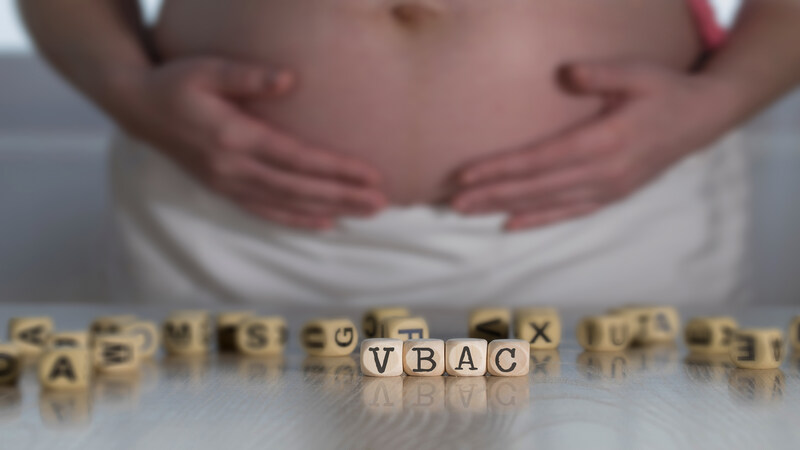According to doctors the success rate of vaginal delivery after Cesarean (VBAC) is around 74 percent and is largely dependent upon various important factors including labor augmentation or induction, duration of pregnancy, cervical readiness among others. A successful vaginal birth after a c-section is also more likely if the issues that caused the c-section earlier are not around this time.
What Should Be Considered When You Plan For A VBAC?
If you are planning a VBAC you have to discuss in length about the likelihood with your obstetrician. However a woman’s eligibility for VBAC depends upon many factors such as (1):
Previous vaginal deliveries
If you had any vaginal delivery either before or after the cesarean section, the possibility of you having a successful VBAC surmounts.
Cause of previous C-section
The cause or reason of your previous C-section is also significant and whether that reason is present in this current pregnancy or not. If you had previous C-section because of breech or distressed baby, you definitely are a good candidate for VBAC but on the contrary if it was due to improper dilatation of cervix or some pelvis issues, then you should not opt for VBAC.
Number of C-sections
The count of C-sections is also important in determining whether you should be going for VBAC or not. Women with previous multiple cesarean sections should not opt for labor trial as chances of complications are high.
Type of incision
Type of incision is also very important in determining your suitability for VBAC. A low transverse incision is less likely to open during labor contractions. If the previous incision was a vertical one, VBAC is not recommended as it poses a risk to the uterine getting ruptured. The scar on your belly can be different from the one on the uterus, so getting this checked is an important factor.
Closure of previous uterine incision
Another important point is the closure of the uterine incision-whether it was done in two layers or one layer.
Other surgery
If you had any other surgery for uterine rupture or fibroid removal, VBAC will not be recommended.
Large pelvis
Considering a VBAC requires your doctor to make an educated guess about your pelvis being large enough to allow the baby to pass through.
Medical conditions
If you have been diagnosed with medical conditions like placenta previa or large fibroids, a vaginal delivery may prove to be risky.
Suitable practitioner
Many hospitals do not support the concept of VBAC for the risks it carries. Hence, you will need to find a caregiver who supports the idea and a hospital that is equipped to handle any complications that may arise.
What Factors Can Make It Difficult To Have A VBAC?

Factors such as age, being overweight or obese, or having a short time between pregnancies (less than 18 months of gap) will make it less likely that you can opt for VBAC. Having a fetus who weighs more than 4 kg or having the pregnancy progress beyond 40 weeks of pregnancy can also make it difficult to have a VBAC. In any case, your doctor will carefully weigh your chances of having a successful VBAC with the risks involved and arrive at a decision (2).
What Are The VBAC Guidelines?
If there are no significant contraindications, expectant mothers can go for vaginal delivery under following conditions (3).
- Transverse low-segment C-section can be given Trial of Labor After Cesarean (TOLAC). The intention of the mother going for a labor trial post cesarean section should be vividly stated. The success rate varies between 60% to 80%.
- The safety of mother and baby should be ensured by delivering in a well equipped hospital where C-section can be done if vaginal delivery is not possible.
- Continuous electronic monitoring of fetus and mother should be done while attempting a labor trial.
- The birth center should be ready in advance to deal effectively any unwanted complication such as uterine rupture, if the need arises.
- There is nothing wrong oxytocin augmentation in women going for vaginal delivery after previous cesarean section.
- Induction of labor with intravenous oxytocin might be accompanied with high risk of uterine rupture and should be administered carefully after counseling.
- Labor induction with prostaglandin E2 or dinoprostone should be avoided as it poses high risk of uterine rupture.
- Prostaglandin E1 or misoprostol is also related with uterine rupture and should not be used while trying for normal labor.
- You can use a Foley’s catheter for promoting ripening of cervix in women undergoing trial of labor after a C-section.
- Multiple gestation is not considered a contraindication for VBAC.
- Diabetes mellitus is not regarded a contraindication for VBAC.
- Fetal macrosomia too, is not considered a contraindication for women going for VBAC.
- Postdatism is also not taken as a contraindication for TOL.
- Women who had a C-section within two years are advised to avoid normal delivery. They are counseled about the potential risks associated with normal delivery post C-section.
What Risks Are Associated With VBAC?

The risks associated with vaginal birth after cesarean deliveries are more than routine vaginal delivery without previous C-section. Hidden risks are always present with deliveries but women having a previous C-scar on their uterus have more risk of uterus rupturing during labor trials.
The important risks associated with VBAC are listed underneath (4)
- It is seen that around 60 to 80 percent of women with previous cesarean section delivery experience normal successful vaginal delivery. However, for women who stay in labor and yet birth through a C-section, the odds of complications are high. Failed labor is a major risk associated with labor trial.
- Rupture of uterus is another major risk seen in normal labor trials in women having a previous cesarean section. If the scar line opens up the condition becomes life threatening and immediate emergency C-section is needed. Though uterine rupture is rare, yet it should be ensured that the hospital is equipped to handle such an emergency.
- Excessive hemorrhage is another serious complication requiring blood transfusion or even hysterectomy to stop the bleeding. In certain cases the uterus is removed, and if that happens, you cannot get pregnant again.
- Infection: Women undergoing labor trial and finally going for cesarean section are exposed to higher risks of infection as compared to those delivering baby via vaginal route or through planned C-section.
- Scar rupture during the first or second stages of labor which can lead to emergency C section.
- Post partum hemorrhage due to abnormal location of placenta because of previous C section.
What Are The Complications Of VBAC?

Labor trial for vaginal delivery in women with previous cesarean section is accompanied with the following complications (5) :
- Atony of uterus – where the uterine muscles fail to contract normally after the baby and placenta are delivered
- Maternal tachycardia or fast heart beat
- Hypotension- abnormally low blood pressure
- Pain at the previous C-section scar
- Scar dehiscence- surgical complications
- Uterine rupture
Contraindications Of VBAC
VBAC is contraindicated under following situations as it poses serious lethal threats to the mother and the baby (6)
- If the previous C-section was done 24 months back
- If mother is having some vaginal infections
- Vaginal bleeding is present
- Sharp intense pain between uterine contractions is present
- Weak and apprehensive mothers should not opt for VBAC
There is a good chance that you will succeed with a VBAC as long as you are a good candidate for it. However, it can never be predicted with certainty whether a woman will have a successful VBAC or will have to go for a repeat C-section.
FAQ’s
1. How Do I Get a Successful VBAC After C-section?
The success of VBAC depends on several factors. They are- if there is any history of previous uterine rupture, how many cesarean the patient had, how is the uterine incision on previous cesarean, how big is the fetus,when was the last birth, is there any vaginal delivery previously. Proper history of the patient and proper monitoring is needed during labor. VBAC should be performed in a well equipped hospital and trained medical personnel should be available.
2. Is It Possible To Give Natural Birth After C-Section?
After the previous cesarean section, there are about 50 to 60 % chances of having successful VBAC .Proper planning with your doctors or midwife is necessary at the third trimester to identify any risk factors which can cause problems during VBAC.
3. Can You Go Into Labor On a VBAC?
If the patient chooses VBAC , the patient will go into labor and the rest will be similar to normal labor. However, the doctors or the health care workers should be alert and proper monitoring of the baby and the mother during labor is needed so that the patient doesn’t land up in an emergency.
4. What Are The Disadvantages Of a VBAC?
The main disadvantages of VBAC include uterine rupture. But only less than 1% patients land up in uterine rupture since advance monitoring of the labor is available these days. Uterine rupture can be life threatening and emergency operation is needed following that. Another complication can occur that is scar rupture during labor, which again needs emergency surgery (7).
References
- Taj G, Sohail N, Cheema SZ, Zahid N, Rizwan S. Review of study of vaginal birth after caesarean section (VBAC). Annals of King Edward Medical University. 2008;14(1):13-. https://annalskemu.org/journal
- Cahill AG, Stamilio DM, Odibo AO, Peipert JF, Ratcliffe SJ, Stevens EJ, Sammel MD, Macones GA. Is vaginal birth after cesarean (VBAC) or elective repeat cesarean safer in women with a prior vaginal delivery?. American journal of obstetrics and gynecology. 2006 – https://pubmed.ncbi.nlm.nih.gov/16846571/
- Sabol B, Denman MA, Guise JM. Vaginal birth after cesarean: an effective method to reduce cesarean. Clinical obstetrics and gynecology. 2015 Jun – https://pubmed.ncbi.nlm.nih.gov/25811124/
- Thornton P. Limitations of vaginal birth after cesarean success prediction. Journal of Midwifery & Women’s Health. 2018 Jan – https://pubmed.ncbi.nlm.nih.gov/29356333/
- Trojano G, Damiani GR, Olivieri C, Villa M, Malvasi A, Alfonso R, Loverro M, Cicinelli E. VBAC: antenatal predictors of success. Acta Bio Medica: Atenei Parmensis. 2019 – https://www.ncbi.nlm.nih.gov/pmc/articles/PMC7233729/
- Birara M, Gebrehiwot Y. Factors associated with success of vaginal birth after one caesarean section (VBAC) at three teaching hospitals in Addis Ababa, Ethiopia: a case control study. BMC pregnancy and childbirth. 2013 Dec – https://bmcpregnancychildbirth.biomedcentral.com/articles/10.1186/1471-2393-13-31
- Stamilio DM, Shanks A. Vaginal birth after cesarean (VBAC) outcomes associated with increasing number of prior VBACs. Women’s Health. 2008 – https://pubmed.ncbi.nlm.nih.gov/19072472/

